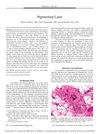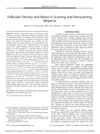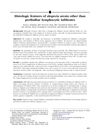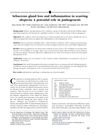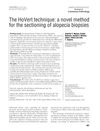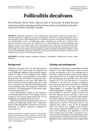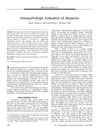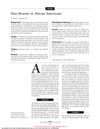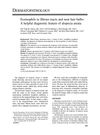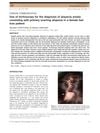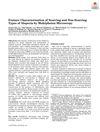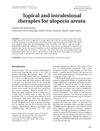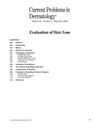A Study of the Histopathological Features of Alopecias on Transverse Sections of Scalp Biopsies
January 2019
in “
Indian Journal of Dermatology
”
alopecia transverse sections scalp biopsies hair follicles androgenetic alopecia alopecia areata peribulbar inflammation telogen hair catagen hair trichotillomania pigment casts lichen planopilaris discoid lupus erythematosus neutrophilic infiltrate folliculitis decalvans hair loss scalp biopsy hair follicle male pattern baldness autoimmune hair loss hair-pulling disorder pigment clumps scarring alopecia discoid lupus neutrophil infiltration scalp folliculitis

TLDR Transverse scalp biopsy sections help diagnose different alopecias by showing hair follicle details and inflammation patterns.
In 2019, researchers studied the histopathological features of various types of alopecia using transverse sections of scalp biopsies from 141 patients. The study found that transverse sections provided more information about the number and distribution of hair follicles, aiding in the diagnosis of different types of alopecia. Specific findings included miniaturization and shift toward telogen and catagen hair in androgenetic alopecia and alopecia areata, peribulbar inflammation in two-thirds of alopecia areata cases, and increased catagen hair and numerous pigment casts in trichotillomania. Inflammatory patterns varied between conditions, with lymphocytic infiltrate common in lichen planopilaris and discoid lupus erythematosus, and neutrophilic infiltrate seen in folliculitis decalvans. Despite the benefits of transverse sectioning, the study noted that overlapping features between different types of alopecia can complicate diagnosis.
